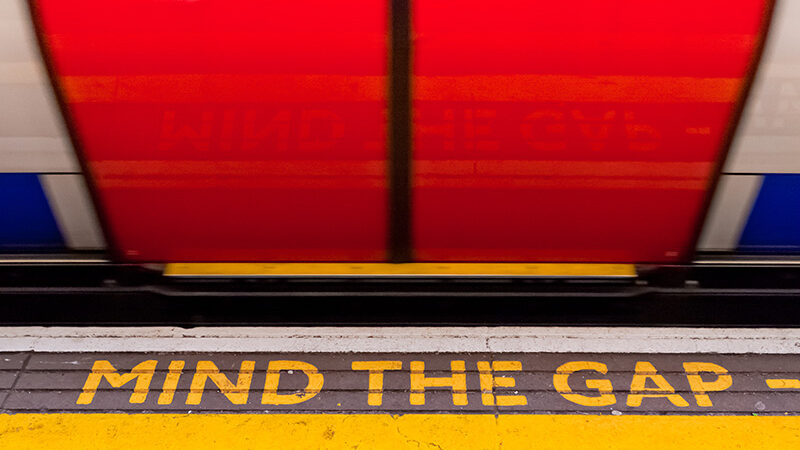Why the Elizabeth line is worth celebrating
 First published in spiked, May 2022
First published in spiked, May 2022We need more big, ambitious infrastructure projects across the UK
The Elizabeth line, the new rail line now up and running under London, represents an incredible feat of engineering. And yet too many are only willing to see the negatives.
Yes, the project formerly known as Crossrail has suffered an enormous cost overrun, coming in £4 billion over budget at £18.8 billion. And yes, it has been delivered three-and-a-half years later than planned.
But it is still a stunning achievement. It started with the giant, hi-tech drills, which excavated and built concrete tunnels around themselves as they slowly weaved through the complex network of pre-existing rail lines and utilities. And it has ended with 73 miles of track and 26 miles of tunnel, stretching from Essex to Berkshire. This is truly an underground train service for the ages.
The biggest problem with the Elizabeth line? There are not enough projects like it. ‘Where’s the Crossrail for the north?’, asked a furious Manchester Evening News today, not without reason. Britain’s major cities need more infrastructure projects of the scale, scope and ambition of Crossrail.
It’s not as if this need for Crossrail-like projects is new. I once wrote a report for the Scottish Development Agency recommending that Glasgow airport be linked to the city centre by rail. This was in 1990. But since its last outing in 2020, the proposal for a Glasgow Airport Rail Link (GARL) has gone nowhere.
Part of the reason for this inertia is that, in Western societies, major transport projects have long faced enormous resistance, mainly on environmentalist grounds. From the green perspective, any large-scale engineering project that benefits humans is regarded as suspicious. We should be shrinking the human footprint, not enlarging it, environmentalists say.
Indeed, even those who have come to praise the Elizabeth line have tended to frame it in rather miserabilist terms. The Guardian, for example, once moaned about the upfront carbon and energy costs of constructing the Elizabeth line. This, the Guardian argued, meant that any benefits for the environment that come from people using public transport instead of their cars ‘may now come too late’.
That’s how the Elizabeth line appears to the killjoyish green mindset. Not as a major piece of public-transport infrastructure that will improve the lives of millions – but as an excessive use of energy and an unwelcome source of CO2 emissions.
Such anti-development sentiments have long been influencing UK policymakers. Hence, ever since 2000, when the Department of the Environment, Transport and the Regions published Encouraging Walking: advice to local authorities, successive governments have tended to favour walking and cycling strategies in cities over big infrastructure projects.
Today, the laptop classes are adamant that low-traffic networks and cycle lanes are the way forward for transport in this country, rather than a third runway for Heathrow or a Crossrail for the north. In transport, anything big and ambitious is now vilified as inherently ridiculous. Few will advocate Elizabeth lines for Glasgow, Edinburgh, Manchester, Liverpool, Leeds or Birmingham. Instead, we are invited to embrace a future of staycations, Zoom, cycling and walking.
At a moment when ambitions for transport in the UK have rarely been lower, the Elizabeth line deserves three huge cheers.
Fmr President of Kenya on Trump cutting off foreign aid:
“Why are you crying? It’s not your government, he has no reason to give you anything. This is a wakeup call to say what are we going to do to help ourselves?”
America first is good for the world.
Our entire Green Socialist establishment should be banged up under the ‘Online Safety’ laws, for spreading demonstrable lies (the ‘climate crisis’), causing non-trivial harm to the industrial working class, ordinary drivers, farmers, taxpayers etc, etc.
#Chagos? #Mauritius PM Navin Ramgoolam "is reported to want Starmer to pay £800m a year, plus ‘billions of pounds in #reparations’." (14 January) https://www.spiked-online.com/2025/01/14/the-chagos-islands-deal-is-an-embarrassment/
Now the Torygraph wakes up https://telegraph.co.uk/gift/1ff8abbb462cd609
Read @spikedonline - first with the news!
Articles grouped by Tag
Bookmarks
Innovators I like

Robert Furchgott – discovered that nitric oxide transmits signals within the human body

Barry Marshall – showed that the bacterium Helicobacter pylori is the cause of most peptic ulcers, reversing decades of medical doctrine holding that ulcers were caused by stress, spicy foods, and too much acid

N Joseph Woodland – co-inventor of the barcode

Jocelyn Bell Burnell – she discovered the first radio pulsars

John Tyndall – the man who worked out why the sky was blue

Rosalind Franklin co-discovered the structure of DNA, with Crick and Watson

Rosalyn Sussman Yallow – development of radioimmunoassay (RIA), a method of quantifying minute amounts of biological substances in the body

Jonas Salk – discovery and development of the first successful polio vaccine

John Waterlow – discovered that lack of body potassium causes altitude sickness. First experiment: on himself

Werner Forssmann – the first man to insert a catheter into a human heart: his own

Bruce Bayer – scientist with Kodak whose invention of a colour filter array enabled digital imaging sensors to capture colour

Yuri Gagarin – first man in space. My piece of fandom: http://www.spiked-online.com/newsite/article/10421

Sir Godfrey Hounsfield – inventor, with Robert Ledley, of the CAT scanner

Martin Cooper – inventor of the mobile phone

George Devol – 'father of robotics’ who helped to revolutionise carmaking

Thomas Tuohy – Windscale manager who doused the flames of the 1957 fire

Eugene Polley – TV remote controls



0 comments